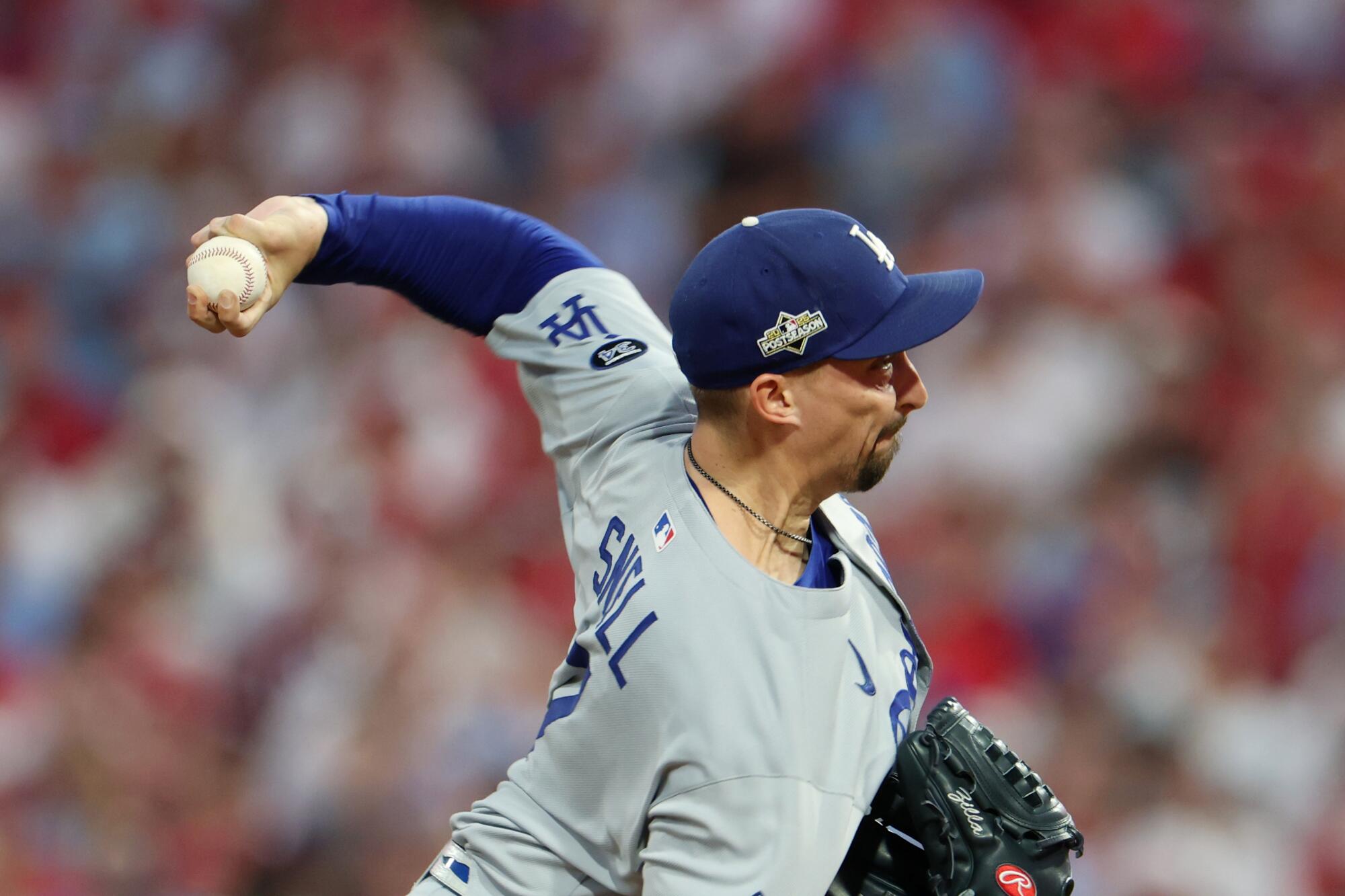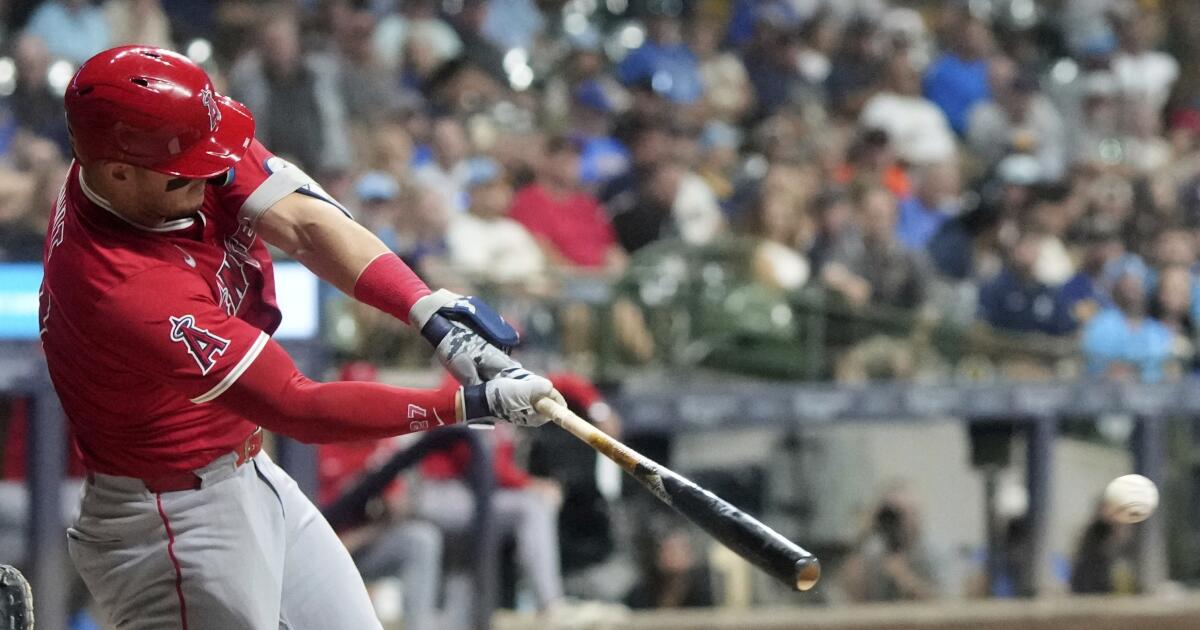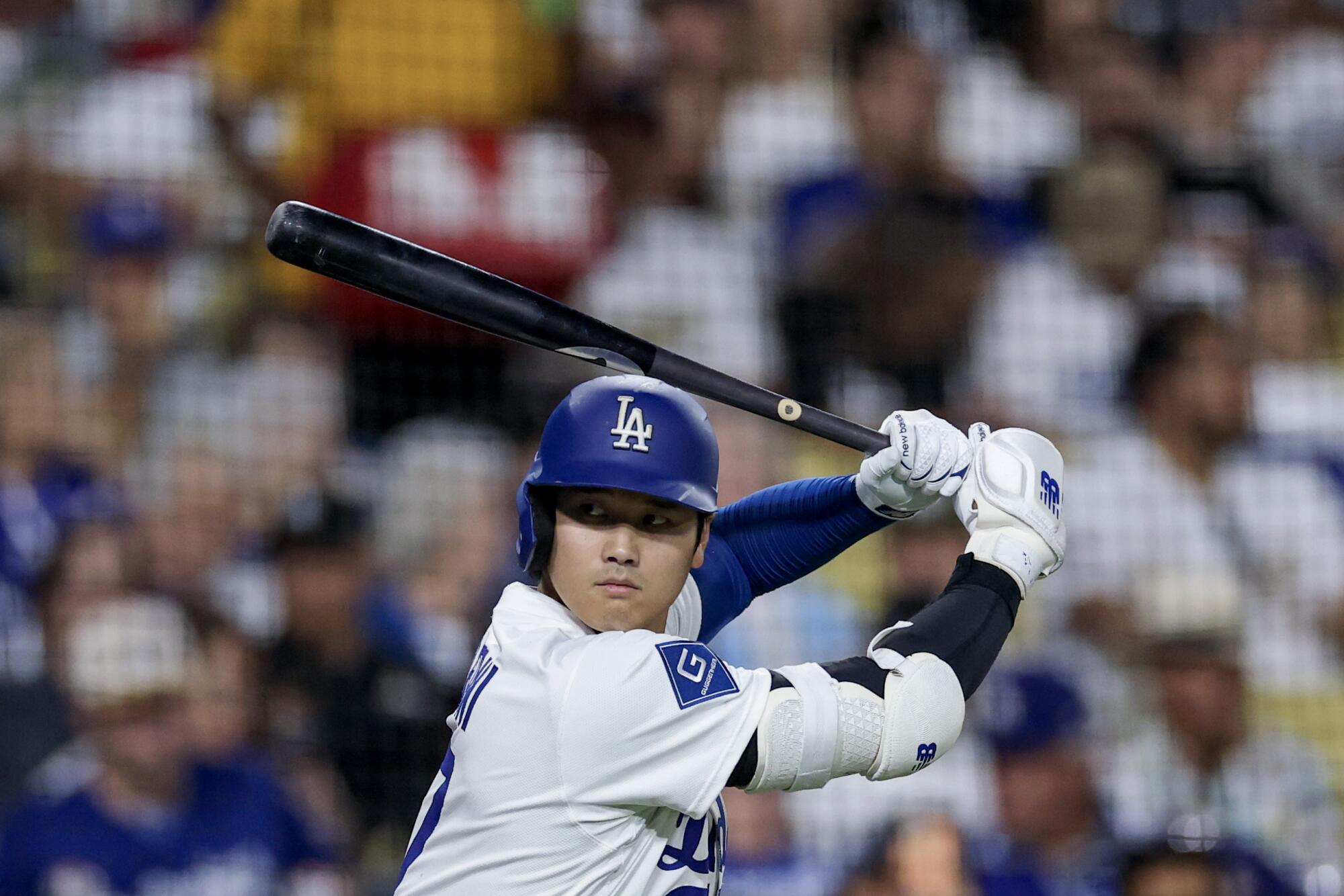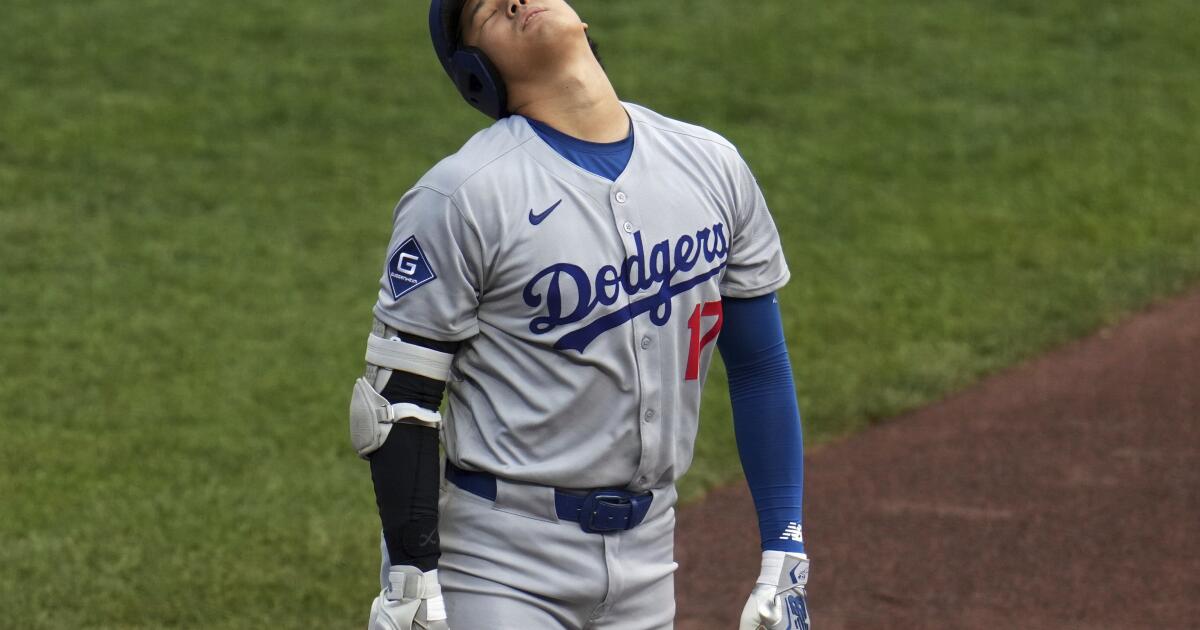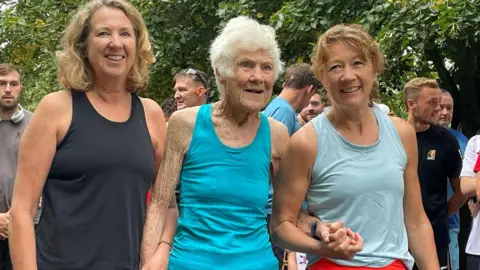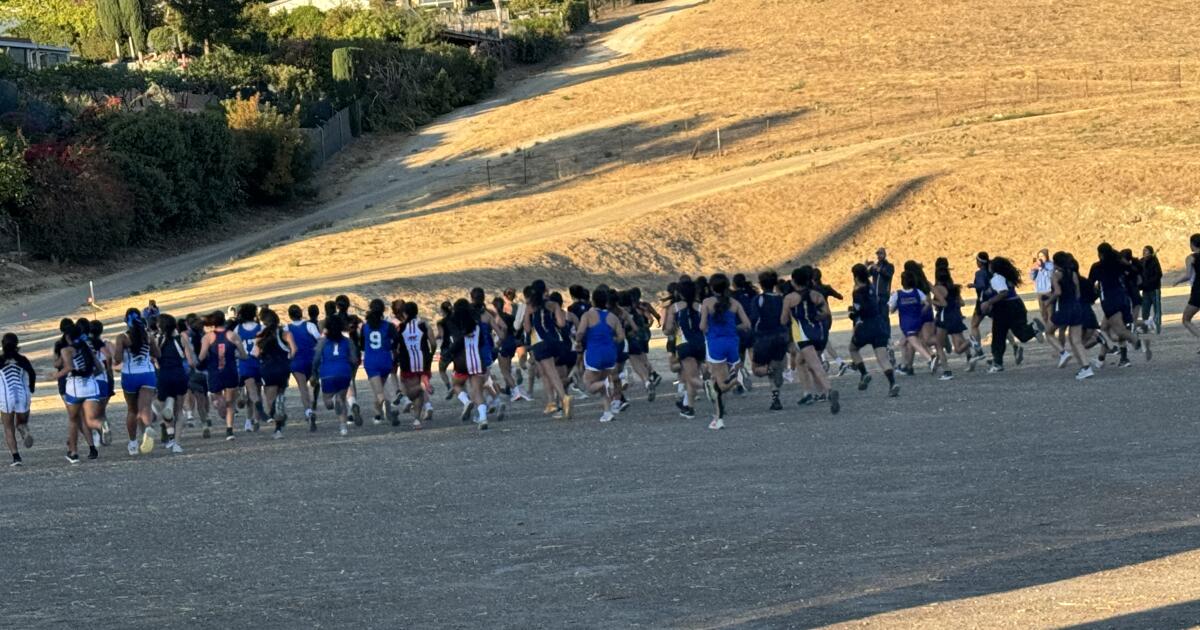Inside the Mookie Betts play call that won NLDS Game 2 for Dodgers
PHILADELPHIA — Even Dodgers fans steeped in the lore of Kirk Gibson might not remember the name of Mel Didier.
Didier was the scout who had issued this warning to the 1988 Dodgers: If you’re facing Dennis Eckersley, the mighty closer for the Oakland Athletics, and the count runs full, he’s going to throw a backdoor slider.
Eckersley threw it, Gibson hit it for a home run, and the Dodgers went on to win the World Series.
If these Dodgers go on to win the World Series, no one will struggle to remember the name of Mookie Betts, of course. On Monday, however, Betts pushed the Dodgers to within one win of the National League Championship Series — not with his bat and not with his glove, but with memory and aptitude to rival Didier.
“His mind is so far advanced,” Dodgers coach Dino Ebel said of Betts. “That was the ballgame right there.”

With the tying run at second base and none out in the ninth inning, he was the calm in a screaming madhouse. As the Dodgers infielders gathered at the mound and Alex Vesia entered from the bullpen, Betts thought back to a play he had participated in once, in an August game against the Angels. Miguel Rojas had taught him the so-called “wheel play.”
“All he had to do was tell me once,” Betts said. “To me, that was like a do-or-die situation. Them tying the game up turns all the momentum there. If we can find a way to stop it, that would be great.
“I just made a decision and rolled with it.”
On the mound, amid the bedlam, Betts put on the wheel play. It’s a bunt coverage: with a runner on second base, the third baseman and first baseman charge home, with the idea that one would field the bunt and throw out the runner at third.
In any previous decade, the Dodgers would have practiced this play in spring training, repeatedly.
“We don’t really even practice the wheel play, with pitchers not hitting any more,” third baseman Max Muncy said. “There’s very few times where you’re 100% sure that a guy is going to bunt.”
This was the time. The Phillies had opened the ninth with three consecutive hits, including a two-run double from Nick Castellanos.
The Dodgers led 4-3 with none out and Castellanos on second base. Phillies manager Rob Thomson said he wanted to play for the tie and take his chances to match his team’s bullpen against the Dodgers bullpen in extra innings.
And for the “never bunt” crowd: the chance to score one run is slightly higher with a runner on third base with one out than with a runner on second base and none out. The Phillies had the bottom of the order coming up — starting with infielder Bryson Stott, whom the Dodgers had evaluated as a good bunter.
Betts remembered how he had asked Rojas when to run the wheel play.
“In a do-or-die situation,” Rojas had told him.
So Betts took charge and put on the play.
“I don’t know if it was very comfortable, but somebody’s got to do it,” Betts said.
“I figured, if there was ever a good time to make a decision and roll with it, that was the time.”
Dodgers third baseman Max Muncy throws to third after fielding a bunt from Phillies second baseman Bryson Stott in the ninth inning in Game 2 of the NLDS on Monday.
(Robert Gauthier / Los Angeles Times)
Muncy would charge and, if the ball was bunted to him, would throw to Betts covering third base. First baseman Freddie Freeman then said he would charge and, if the ball was not bunted to him, would cover second base so Stott could not advance there, since second baseman Tommy Edman would be covering first. Later, on his PItchCom, Vesia said he heard an order to cover second base.
By the time Dodgers manager Dave Roberts got to the mound, the infielders said the play was on.
“When Doc came out and made the pitching change, we talked to him about it and he was all on board,” Muncy said. “I am going to credit Mook. It was his idea.”
Said Betts: “That was one of times where Doc called on us and said, you guys figure it out — in a very positive way. And we did.”
Rojas called Betts “an extension of the manager on the field.”
Said Rojas: “I’m happy that he called it right there on the field. Because it was the right play with the right runner, knowing the guy was going to bunt.”

All of this speaks well of Betts’ intuition and intelligence, but the postseason is not the time for “trust the process” blather. The postseason is the time when the right call is the one that actually works.
For Stott or anyone else, Thomson said, a batter that sees the wheel play in motion should forget about the bunt and swing away, given the holes left by two infielders charging the plate and the other two rushing to cover a base.
Stott bunted.
The first problem for the Phillies was that they had no one available to pinch-run for Castellanos. Aside from a backup catcher, they had two position players left: Harrison Bader, playing with a sore groin, and Weston Wilson, whom the Phillies had to save to run for Bader.
The second problem for the Phillies was that the Dodgers had only run the wheel play once this season, so even the best advance scouts could not have been warning the Phillies to beware.
“It’s something we have under our sleeve,” Rojas said.
The third and most critical problem for the Phillies was that Betts had lingered close to second base, shadowing Castellanos. By the time Stott could have seen Betts take off for third, it was too late.
“Mookie did a great job of disguising the wheel play,” Thomson said.
Muncy fielded the ball cleanly, and Betts beat Castellanos to the bag by so much that Betts had time to drop his knee and block the bag before tagging out Castellanos, holding onto the ball even as Castellanos upended him.
“Those guys executed it to perfection,” Roberts said. “It was a lot tougher — they made it look a lot easier than it was. And for me, that was our only chance, really, to win that game in that moment.”
If Muncy did not field the ball cleanly or did not make a good throw, or if Betts did not beat Castellanos to the bag or tag him out, the Phillies would have had the tying run at third base and the winning run at first base with none out.
But they did not, which meant the ensuing single did not tie the score. Two batters later, the Dodgers had won.
The play would be difficult enough for a lifelong shortstop. Betts is in his first season as a full-time shortstop.
“It shows his intuition in the game,” Muncy said. “It’s second to none out there. It doesn’t matter what position you put that guy at — he knows what’s going on. It’s honestly really impressive.”
Said Ebel: “He’s obsessed with being a great player. And he’s still learning. He’s still going to get better. That’s the scary thing about it.”
As the Dodgers headed for a happy flight back to Los Angeles, Betts offered this game a five-star review.
“I’ll take off my Dodgers hat and just put on a fan hat,” he said. “I think that was a really dope baseball game.”

